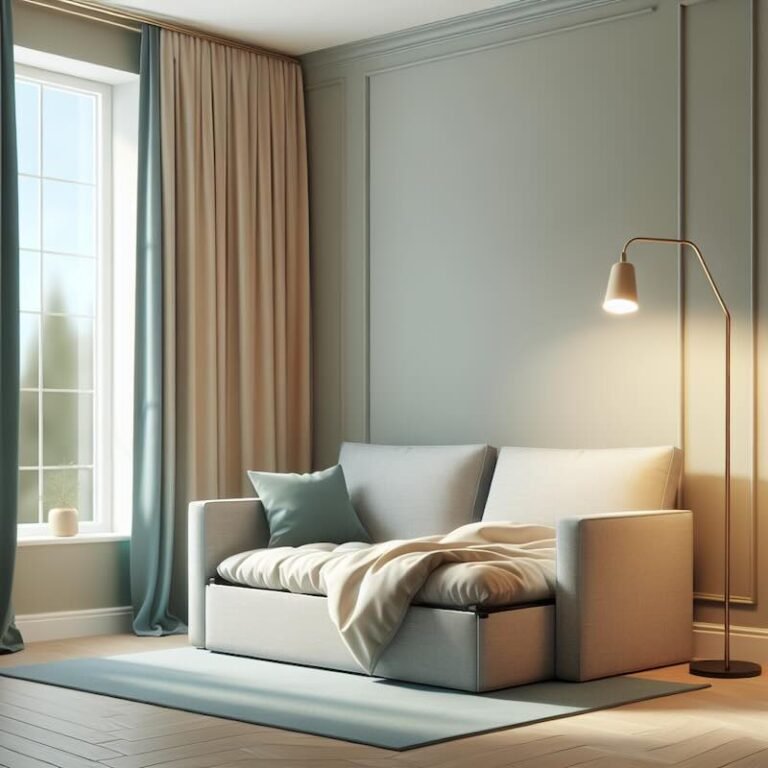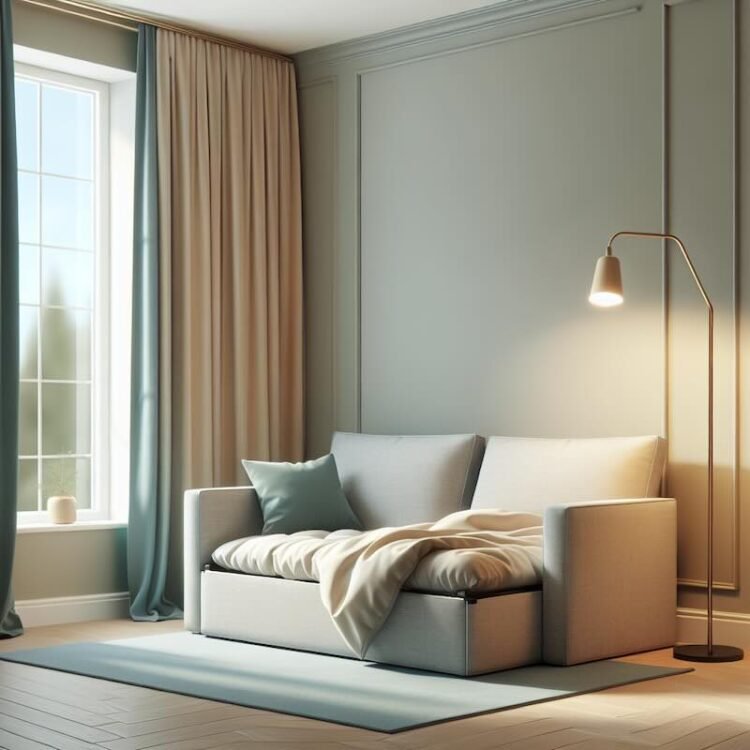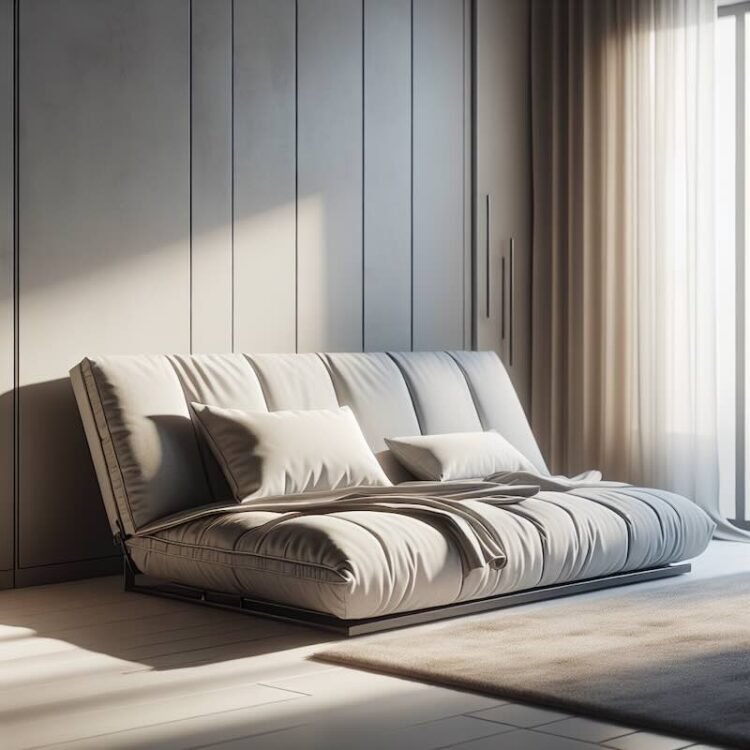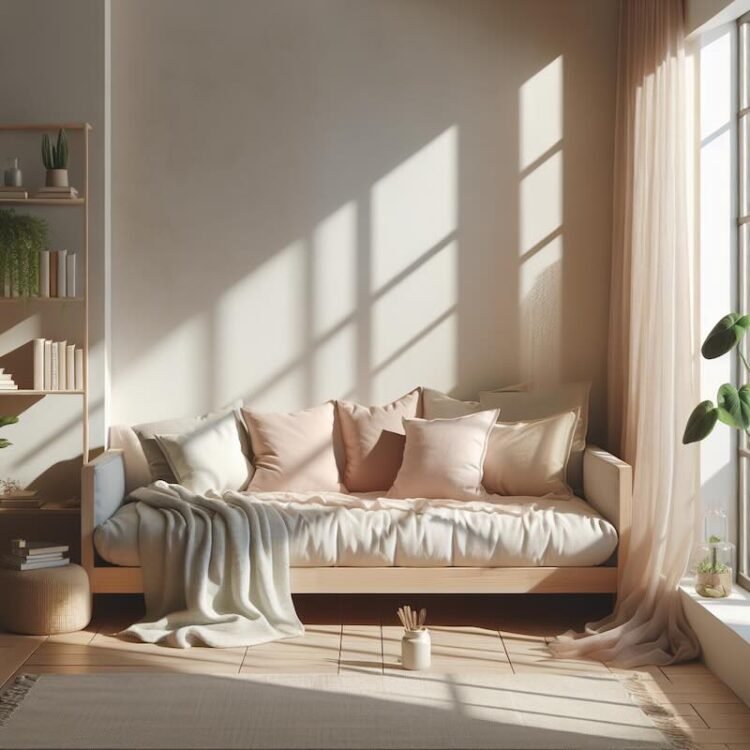
If you live in a studio, a compact apartment, or you’re simply trying to make the most of a smaller space, furniture has to pull double duty. The coffee table often turns into a dining spot. Shelves hide storage baskets. And then there’s the sleeper sofa—the holy grail of space-saving furniture.
But here’s the catch: not every sleeper sofa is cut out for everyday sleeping. Some are designed with guests in mind, meaning they’re fine for one or two nights but leave you waking up stiff if you use them daily. That’s why choosing wisely matters.
This guide breaks down everything—from mattresses and frames to fabrics and mechanisms—so you don’t just get a couch that looks good in your living room, but one that gives you the comfort of a real bed night after night.
Key Considerations Before Buying Sleeper Sofas – Know Your Needs
Before you even start scrolling through endless sofa options online, pause and think about your actual needs.
1. Measure your space—twice.
Sleeper sofas come in all shapes and sizes, and it’s not just about whether the sofa fits against the wall. Will the pull-out bed clear the coffee table? Can it extend fully without blocking a doorway? Even more importantly—can it fit through your front door or up the stairs? A lot of returns happen not because of comfort, but because delivery didn’t go as planned.
2. Daily bed or occasional guest use?
If this is going to be your main bed, you’ll want a sofa with a thicker mattress and a strong frame. Guest-only use lets you compromise a little on comfort. Be honest here—don’t tell yourself “oh, just for a while” if you already know you’ll be sleeping on it every night.
3. Who’s going to use it?
Kids: durability and stain-resistant fabric matter more than fancy design.
Couples: you’ll need a wider bed (full or queen) and a sturdier frame.
Seniors or anyone with back pain: avoid futons with thin mattresses and choose a pull-out or sectional sleeper with proper support.
Because nothing’s worse than investing in a sleeper sofa, only to realize your feet hang off the end or the mattress feels like a camping pad.
Mattress & Frame Quality – The Real Game-Changer
Let’s be real: the mattress is what makes or breaks a sleeper sofa for daily use. The sofa part matters too, but if you’re sleeping on this every night, you need to think like you’re buying a bed.
Mattress Types You’ll Come Across
Innerspring: Budget-friendly, bouncy, but not the best for everyday use. Springs can poke over time.
Memory foam: The sweet spot for comfort. Molds to your body, evenly distributes weight, and tends to hold up better long term.
Hybrid: A mix of coils and foam, giving balance between bounce and contour. Great for couples.
Air-over-coil: Less common, but combines a thin coil system with an inflatable mattress top. Comfortable but requires upkeep (and no one likes dealing with a slow leak at 2 a.m.).
Thickness and Firmness
Most sleeper sofa mattresses hover around 4 inches. For occasional use, that’s fine. For everyday, go at least 5–6 inches. Too thin, and you’ll feel the frame. Too thick, and the sofa may not close properly. Firmness is subjective, but medium-firm usually works for most sleepers.
Frame Matters Just as Much
The mattress sits on a frame, and if that frame bends, creaks, or weakens, the mattress quality doesn’t matter.
Kiln-dried hardwood frames: The gold standard. Durable, long-lasting.
Metal frames: Strong, often cheaper, but heavier. Look for steel, not aluminum.
Particle board: Cheap, but not reliable for daily sleeping. Avoid.
Mechanisms – How It Opens Up
Traditional pull-out: Bed folds out from under the cushions. Comfortable but heavier.
Click-clack futon: Backrest folds down flat. Space-efficient, but usually thinner mattresses.
Trundle style: A second mattress slides out from under the sofa. Great for guest use but not ideal for daily sleeping.
Sectional sleepers: Large, often with storage built in. Can be very comfortable if you have the space.
Pro tip: If possible, test the mechanism in person. A squeaky, stiff pull-out may drive you crazy after a month.
Sleeper Sofa Types
When searching for the perfect mini sleeper sofa, it’s helpful to know the most common types available, each offering distinct features to suit various needs and preferences:
Small Pull-Out Sofa

This classic choice features a mattress stored within the sofa that pulls out to convert into a bed. Sizes range from twin to queen, making these pull-out couches for small spaces popular for their ease of use and robust construction.
Futon

Lightweight and versatile, futons serve as small fold-out couch beds that consist of a cushion that folds flat to create a sleeping area. Ideal for minimalistic spaces, they often include removable covers for easy cleaning and customization.
Daybed

Acting as both a sofa and a bed, daybeds typically feature a twin-size mattress. Their design works well in studio apartments or guest rooms where space is limited, making them great small space sleeper options.
Convertible Couches for Small Spaces

A modern take on sleeper sofas, these couches have a backrest that reclines into various positions, transforming the sofa into a lounger or bed. Known for their sleek design and functionality, they make excellent stylish and functional sleeper sofas.
Design, Upholstery & Everyday Ergonomics
A sleeper sofa is more than just a bed—it’s your hangout spot, your TV lounge, maybe even your office chair. That’s why its design and upholstery matter.
Fabrics That Actually Work
Microfiber: Soft, stain-resistant, budget-friendly. Great for kids and pets.
Leather (or faux leather): Easy to clean, stylish, but can feel hot in summer and cold in winter.
Polyester blends: Durable, affordable, lots of colors.
Linen or cotton: Breathable and natural, but stains easily.
If you’re using it daily, prioritize cleanability. Removable, washable covers are a lifesaver.
Sitting Comfort vs Sleeping Comfort
High-density foam in the cushions keeps the sofa from sagging when used for sitting. But don’t forget ergonomics:
Armrests that are too high make it hard to lounge.
A stiff backrest might look sharp but feel terrible for a movie night.
Softer cushions may feel cozy but could wear out faster.
And here’s the irony: the sofa has to feel good both ways—as a seat and as a bed.
Durability, Budget & Getting Real Value
Buying a sleeper sofa is like buying a hybrid appliance. You want the price to reflect not just style, but functionality.
Build Quality & Longevity
Check the weight limit. A sofa bed rated for 500 lbs will last longer than one rated for 250 lbs. Reinforced joints and hardwood frames almost always outlive cheap plywood versions.
Maintenance & Care
Removable cushion covers = less stress over spills.
Vacuuming regularly helps prevent dust and allergens.
Flipping or rotating the mattress (if possible) keeps it from sagging.
Budget Ranges to Expect
Entry-level ($300–600): Usually futon or basic pull-outs. Best for guest use.
Mid-range ($600–1,200): Good balance of quality and comfort. Suitable for everyday sleeping.
Premium ($1,500+): High-end memory foam or hybrid mattresses, kiln-dried frames, designer fabrics. If this is your permanent bed, the investment makes sense.
And don’t ignore the fine print: warranties and return policies are essential. A “comfortable” sofa can feel very different once you actually sleep on it.
Best Styles & Final Buyer’s Guide Checklist
Now that we’ve covered the technical stuff, let’s look at styles.
Sectional sleepers: Perfect if you’ve got the space. Many include storage for bedding.
Loveseat sleepers: Compact, great for one person.
Futons: Affordable and space-saving, but rarely ideal for daily sleeping.
Classic pull-outs: Still the most reliable for real mattress comfort.
Quick Buyer’s Checklist
When shopping, run through this mental list:
Mattress comfort: memory foam or hybrid, 5–6 inches thick.
Frame strength: hardwood or steel, not particle board.
Mechanism: smooth, easy, not squeaky.
Size: fits your room and sleeping needs.
Fabric: durable, easy to clean, fits your lifestyle.
Budget: realistic, with value over looks.
Conclusion – Comfort First, Style Second
Sleeper sofas can be lifesavers in small spaces. They let you host guests, stretch out for a nap, or replace a traditional bed entirely. But if you’re planning to sleep on one every night, the rules change. Style alone won’t cut it—you need mattress comfort and a strong frame above all else.
So, measure your space, think honestly about how you’ll use it, and focus on durability. Pick a sleeper sofa that works as hard as you do, day and night. That way, you don’t just get a piece of furniture—you get peace of mind and a good night’s rest.
